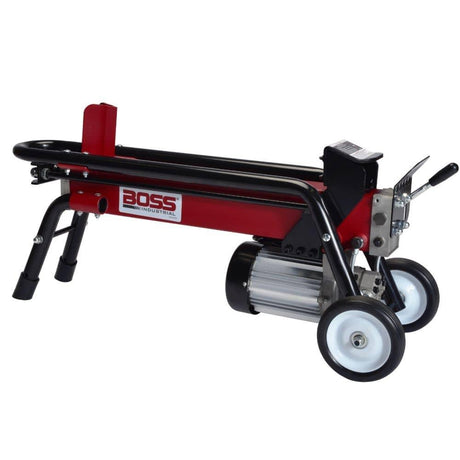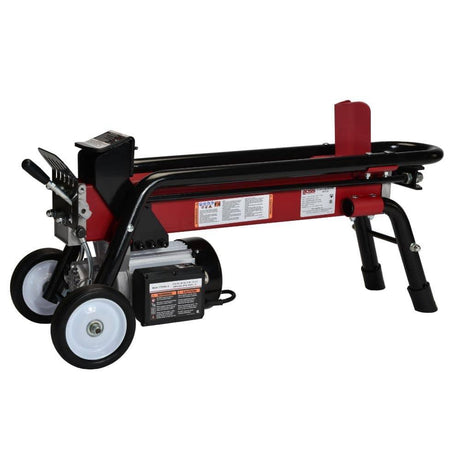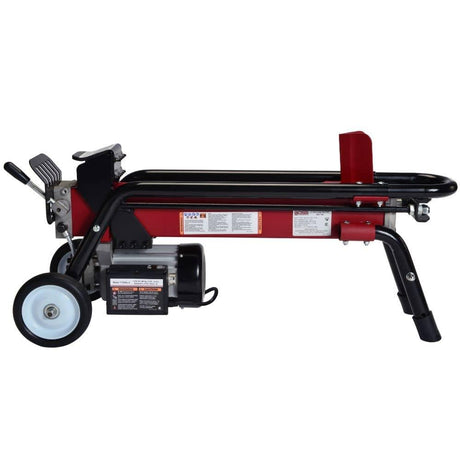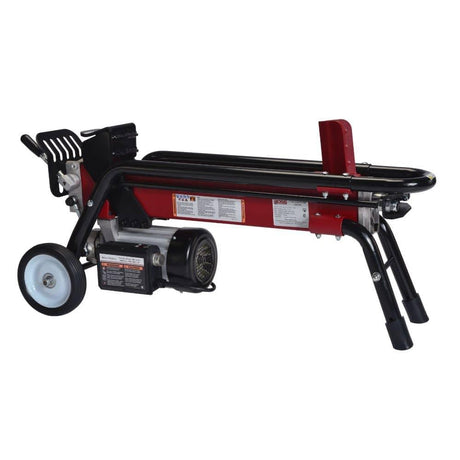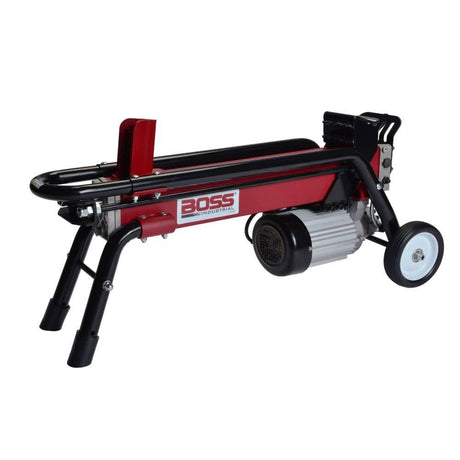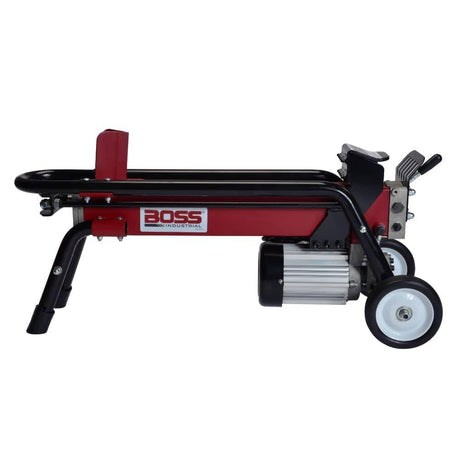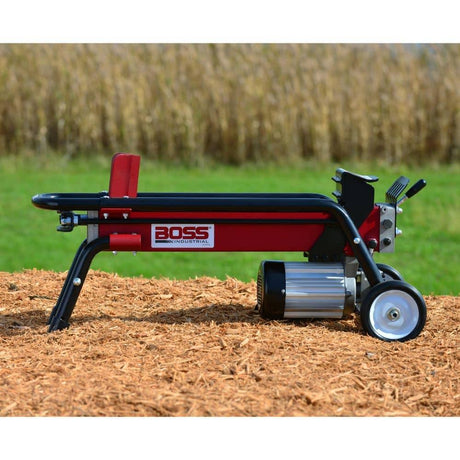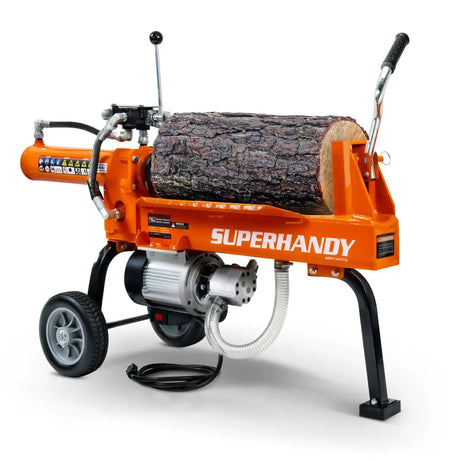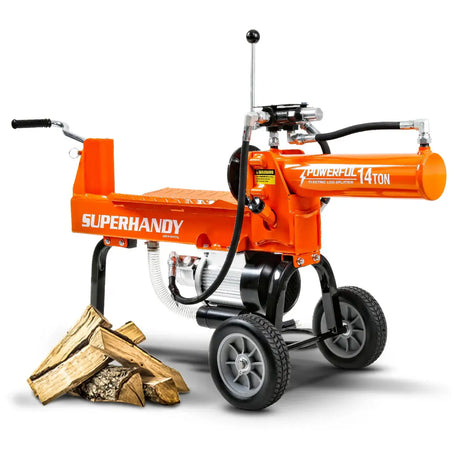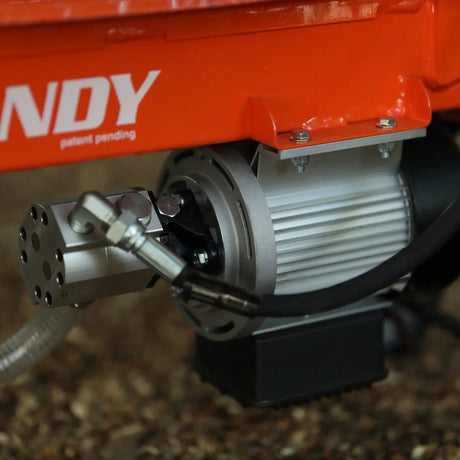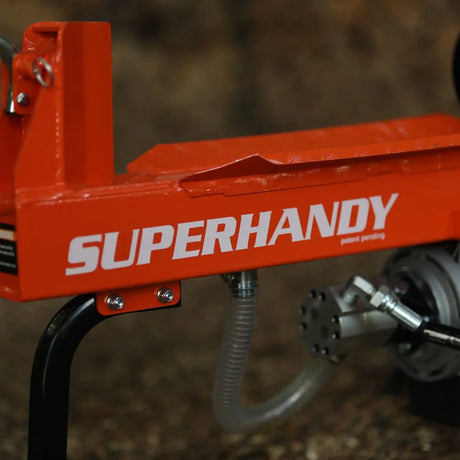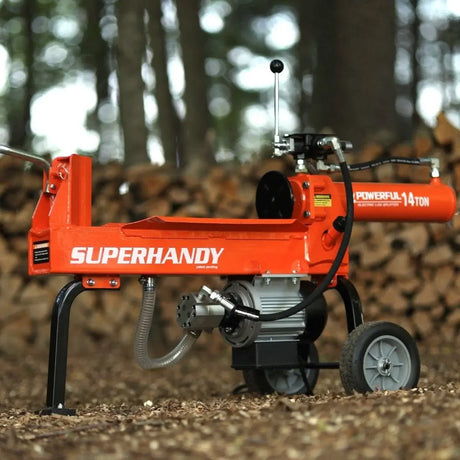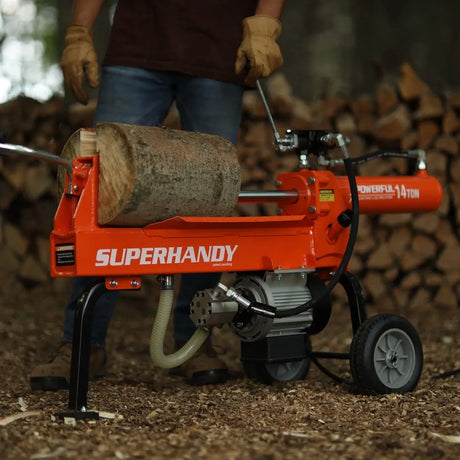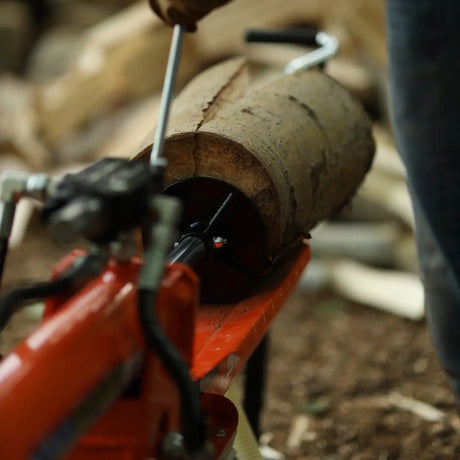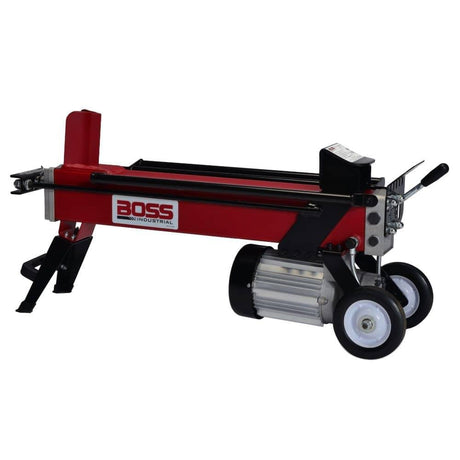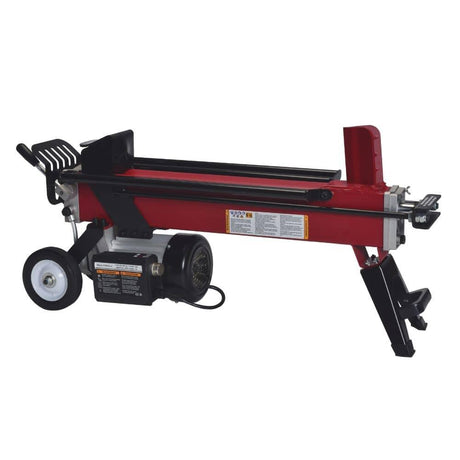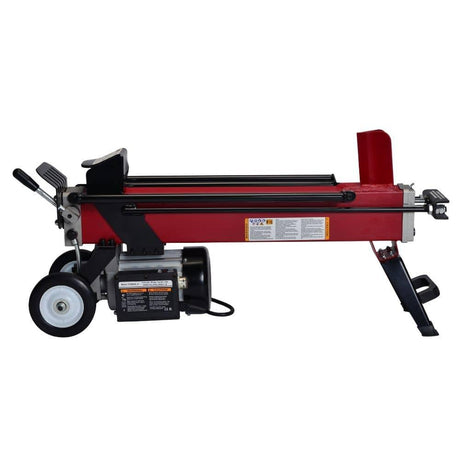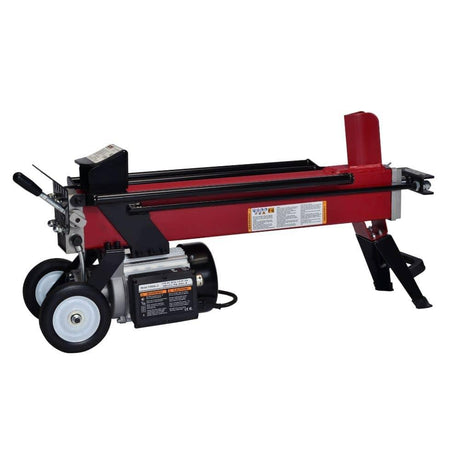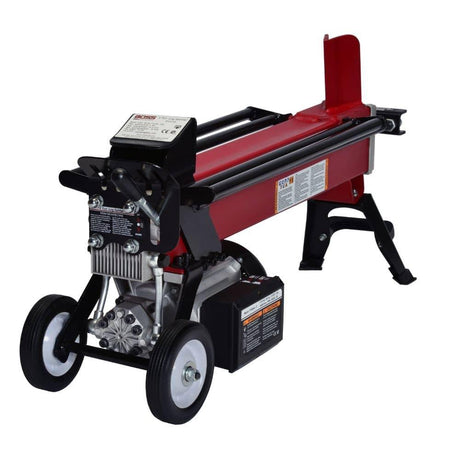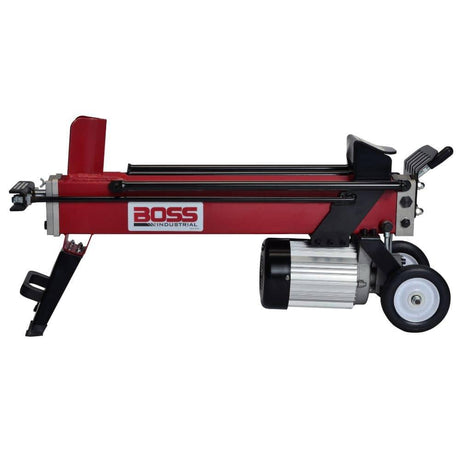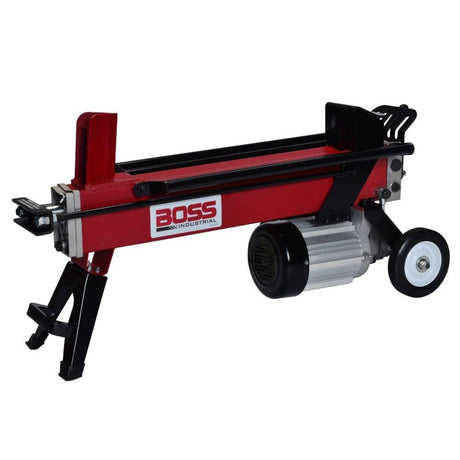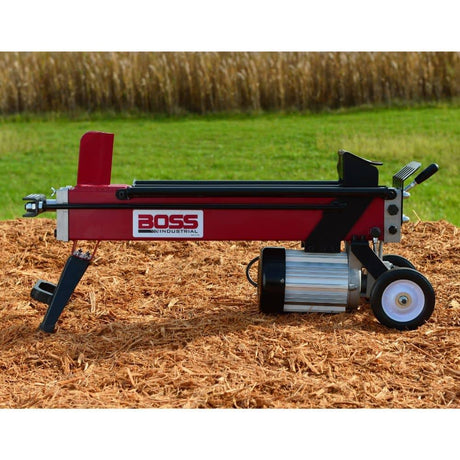Boss Industrial
Boss Industrial GD16T21 16-Ton Dual Action Gas Log Splitter
$1,669.99Unit price /UnavailableSuperHandy
SuperHandy 14 Ton Electric Log Splitter - 120V Corded, 20" Max Log Length
$934.99Unit price /Unavailable
Shop Small Log Splitters for Easy, Efficient Wood Splitting
What Qualifies as a Small Log Splitter?
A small log splitter is typically compact, lightweight, and built to handle light to moderate splitting tasks—ideal for softwoods, seasoned logs, and smaller diameters. These machines usually fall in the 5-ton to 10-ton range, often powered by electric motors that plug into a standard 120V outlet.
Some also call them:
- Compact log splitters
- Mini wood splitters
- Portable firewood machines
They're not designed to break through giant rounds of green oak—but they're excellent for splitter for small-diameter logs, backyard stockpiles, or occasional prep for the fireplace or campfire.
Who Are Small Log Splitters Best For?
These machines are ideal for anyone who needs a simple, beginner-friendly wood splitter that doesn't take up half the garage.
Perfect for:
- Homeowners splitting a few cords per season
- Fireplace or woodstove users prepping indoor wood
- Women, seniors, or first-time users wanting a safer, manageable tool
- People with limited storage space or a small backyard
If you want a plug-and-play firewood splitter that's safe, efficient, and compact, this is your lane.
When to Choose a Small Splitter Over a Full-Sized Model
Go small if:
- You split logs under 10-12 inches in diameter
- You need a low-noise wood splitter that runs inside a garage
- You're working in tight spaces or just need something portable
- You want an affordable log splitter for small jobs without the size or weight of a pro machine
Small splitters won't match a 30-ton gas model—but for seasoned logs, daily fireplace use, or light winter prep, they get the job done without overkill.
Explore Our Best-Selling Small Log Splitters
Electric vs. Gas-Powered Small Log Splitters
Here's how to decide:
- Small electric log splitters (most popular):
- Plug into a standard 120V home outlet
- Ideal for indoor use, garages, and quiet operation
- Low-maintenance, clean, and compact
- Best choice for most homeowners
- Small gas log splitters (less common):
- Better suited for outdoor use
- More portable in off-grid settings
- Slightly more power, but more noise and upkeep
Most users go with a compact electric log splitter for its convenience. Unless you're far from power, electric just makes more sense.
Tonnage Range and Recommended Log Sizes
Small splitters usually deliver 5 to 10 tons of hydraulic force, which is plenty for:
- Softwoods like pine, fir, and cedar
- Seasoned hardwoods (up to 10-12" diameter)
- Firewood for firepits, woodstoves, or small wood burners
For everyday residential use, a 6- to 7-ton small wood splitter hits the sweet spot: light enough to move, strong enough to work.
Indoor, Garage, and Backyard Use Cases
Small splitters shine in places where big machines don't fit.
Use them:
- Inside a garage with good ventilation
- On back patios, driveways, or covered sheds
- Near your woodpile or firewood rack for quick access
They're the go-to indoor-friendly log splitter—quiet, clean, and easy to operate. Great for tight neighborhoods or late-afternoon splitting without disturbing anyone.
Lightweight Frames, Compact Designs, and Portability Features
Our small firewood splitters are made to move. Look for:
- Built-in wheels and easy transport handle
- Tabletop splitter formats for garage benches or outdoor tables
- One-person operation with safety push-button controls
- Durable but lightweight steel frames
Some weigh under 100 lbs and can be stored upright in a corner—ideal for limited storage areas or seasonal use.
How to Choose the Right Small Log Splitter
Tonnage Needs Based on Wood Type and Frequency
When it comes to small log splitters, choosing the right tonnage is about matching your machine to the wood you're actually splitting.
Here's a quick guide:
- 5-6 Ton: Ideal for softwoods like pine and spruce, seasoned and under 10" diameter.
- 7-8 Ton: Handles seasoned hardwoods (like oak or maple) up to 12".
- 9-10 Ton: Best if you split regularly or want faster cycle times with tougher wood.
If you're splitting once a week for your fireplace or backyard firepit, a 6-ton compact log splitter will be plenty. For more frequent use or slightly bigger rounds, bump up to 8-10 tons.
Don't overbuy—small splitters are made for efficiency, not brute force. Go just powerful enough for your wood type and you'll get years of smooth operation.
Portability: Wheels, Handles, and Compact Storage
This is where small splitters shine. Unlike heavy-duty machines that need a trailer or winch to move, portable log splitters can go just about anywhere.
Look for:
- Built-in wheels that glide over driveways or grass
- An easy transport handle or grip bar for one-person moves
- A frame that stands upright for vertical storage in tight spaces
- Under 100-120 lbs for true mobility
If you're short on space or split in different locations, go with a lightweight wood splitter designed for garage walls, sheds, or patios.
Safety and Ease of Operation for Beginners and Homeowners
One of the biggest advantages of a small electric log splitter is how easy and safe it is to use—especially if you've never used a splitter before.
Here's what to prioritize:
- Push-button controls or simple lever activation
- Two-handed operation for added safety
- A stable, low-profile frame that won't tip over
- A horizontal-only design that feels natural and easy to load
- Quiet, clean motor—perfect for indoor or suburban use
These are true beginner-friendly wood splitters. No gas, no complicated maintenance. Just plug in, load a log, and split.
Small vs. Large Log Splitters: Which One Makes Sense for You?
Pros and Cons Based on Property Size and Wood Volume
Here's a side-by-side look at small vs. large log splitters:
| Category | Small Log Splitters | Large Log Splitters |
|---|---|---|
| Power/Tonnage | 5–10 tons | 20–35+ tons |
| Portability | Lightweight, compact, easy to store | Heavy, often towable |
| Setup Location | Great for garages, patios, small yards | Best for outdoor work or rural properties |
| Ideal Wood Type | Seasoned softwood or hardwood under 12" | Large, wet, or knotted logs |
| Maintenance | Low (especially electric models) | Higher (gas engines, hydraulics, tires) |
If you live in town, don't split often, or value simplicity, a compact electric log splitter makes more sense. For rural properties or big firewood demands, larger models may be worth the size.
Use Cases: Firepits, Campfire Prep, Light Home Heating
A mini log splitter is the perfect match for lifestyle use—not logging.
Here's when they shine:
- Weekend firepit sessions and s'mores nights
- Splitting pre-cut logs from delivery for indoor woodstoves
- Making bundles for camping trips or cabins
- Topping up a small rack during light winter heating
If you're not prepping 5 cords a year, don't overthink it. A compact splitter for occasional use is faster, quieter, and less hassle than swinging an axe—or buying more machine than you'll ever use.
Frequently Asked Questions (FAQs)
What Size Logs Can a Small Log Splitter Handle?
What Size Logs Can a Small Log Splitter Handle?
A small log splitter—typically in the 5- to 10-ton range—can easily handle logs up to 10-12 inches in diameter, depending on the wood type and how seasoned it is.
Here's what to expect:
- Softwoods (pine, fir, cedar): up to 12"
- Seasoned hardwoods (oak, maple, birch): 8-10", clean grain
- Green or knotted logs: stick to smaller sizes, or let them dry first
These machines are built for fireplace-ready rounds, not monster hardwood stumps. If your logs fit on a fireplace rack, a compact log splitter can likely handle them.
Are Small Log Splitters Powerful Enough for Hardwood?
Are Small Log Splitters Powerful Enough for Hardwood?
Yes—but with the right expectations.
A small electric log splitter can split seasoned hardwoods like oak or ash, especially if they're under 10 inches and have clean grain. But you'll want:
- At least 7 tons of splitting force
- A model with a sturdy steel wedge and solid ram
- Well-seasoned wood (not fresh-cut or wet)
If you're regularly tackling large or knotted hardwood rounds, you may need more power. But for the average homeowner, a lightweight wood splitter handles hardwood just fine—as long as you work within its limits.
What's the Best Small Log Splitter for Beginners or Light Use?
What's the Best Small Log Splitter for Beginners or Light Use?
For first-time buyers or light-duty users, go for a compact electric log splitter that's:
- 5 to 7 tons in capacity
- Plug-and-play (120V standard outlet)
- Equipped with built-in wheels and easy-grip handles
- Has a simple, two-hand safety control
- Designed for horizontal-only operation (easier loading)
These models are ideal as a log splitter for women, seniors, or anyone new to firewood work. They're quiet, clean, low-maintenance, and take up very little space.
In short: if you're splitting wood for a fireplace, firepit, or occasional winter use, this is the best way to keep it safe, simple, and efficient.

